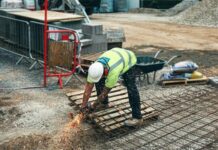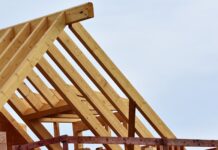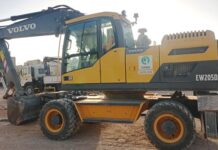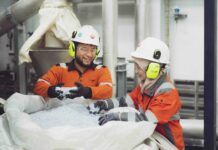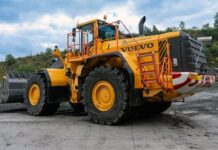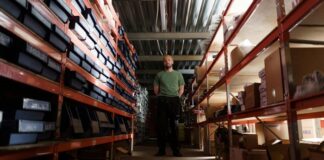The main takeaway from the most recent IPCC report from the United Nations was that if one doesn’t promptly and significantly cut greenhouse gas emissions, undoubtedly a worldwide disaster is on the cards. The research urged every country and industry to reduce its carbon footprint as much as possible, as quickly as possible, in order to prevent the world temperature from rising above 1.5° Celsius.
The construction sector is particularly troubled by this message. More carbon dioxide is released into the atmosphere by buildings and construction projects than by any other source, accounting for around 37% of all energy-related CO2 emissions worldwide.
Despite how frightening the climate problem is, there are other environmental issues that the construction industry must solve. In addition to greenhouse gases, existing construction practises produce a considerable amount of landfill waste and other types of pollution that are bad for our quality of life, natural ecosystems, and human health.
In order to prevent the worst effects of the climate crisis and other natural disasters, the industry must innovate aggressively. By doing so, it will not only play a crucial role in the global effort to halt global warming and create a healthier, more sustainable world but will also uncover opportunities that will improve the quality of the businesses and the built environments that are produced. Recently, Nexii Building Solutions described its leading sustainability and effects KPIs, which one thinks can serve as a template for the sector. This is a roadmap of efforts that can revolutionise how the construction industry does business, both within the operations of individual companies and across networks of suppliers and contractors. These important initiatives include:
Reduce operational carbon emissions in the industry
Operational carbon relates to a building’s energy use and corresponding carbon emissions during the course of its life, which are mostly attributable to HVAC (heating, ventilation, and air conditioning) systems. One can significantly lower a building’s overall energy use and expense by emphasising walled, airtight, energy efficient buildings powered by renewable resources.
Finding out where businesses produce pollution and how they might operate differently are crucial aspects of lowering and eliminating the industry’s carbon pollution. This could involve making all facilities more energy-efficient, using electric vehicles and equipment, switching to renewable energy sources, reducing the amount of unnecessary business travel, and collaborating with supply-chain and green building technology providers who share the same commitment to reducing carbon emissions. High, uniform standards are guaranteed throughout the industry by using science-based targets that have been assessed by a third-party validator, such as SBTi.
Reducing the amount of embodied carbon in building materials
The embodied carbon in the building materials—released into the atmosphere during extraction, manufacturing, assembly, and end-of-life treatments – assumes an increasingly significant role as one moves towards clean, renewable energy sources and builds more effective structures that are operationally net-zero energy users. Embodied carbon is predicted to account for close to half of all emissions from new construction by 2050. Nexii produces precast and tilt-up concrete buildings and construction goods using Nexiite, a patented material with up to 36% less embodied carbon than ordinary concrete. Mass wood is another low-embodied carbon substitute for steel that is gaining popularity as construction regulations are modified to allow for its use. One must capitalise on this momentum by advancing the use of decarbonized construction materials, beginning with creative low-carbon substitutes.
Getting Rid of Waste
Traditional building has a substantial negative influence on the local land, air, and water resources, as well as a large amount of on-site garbage. In 2018, nearly 145 million tonnes of construction project debris were dumped in U.S. landfills. Up to 30% of every delivery of building supplies to a normal construction site may be wasted. Precision off-site manufacture of building products combined with efficient on-site assembly can reduce this waste to almost nothing.
Building and building product manufacturing facilities can collaborate with independent certification programmes like TRUE (Total Resource Use and Efficiency), run by Green Business Certification Inc., which offers advice on achieving zero waste goals, lowering carbon footprints, and promoting a circular economy. This may entail finding options for reuse or recycling to divert waste from landfills, optimising collection schedules and container sizes, educating workers about zero waste, and incorporating targets into purchasing rules or guidelines.
Fostering thriving ecosystems
People spend between 80 and 90% of their time indoors, where pollution levels can be up to two times higher than they are outside. A large portion of this can be attributed to poorly constructed ventilation systems and to the off-gassing of building materials, which frequently include hazardous compounds. One must make sure that any new alternative building materials that are developed or come across don’t include any toxic elements that endanger humans, other living things, or the environment. By reporting building product constituents in a regulated manner, such as through Healthy Product Declarations, Declare Labels, and Cradle-to-Cradle Certification, a high standard of openness in this regard can be attained.
Healthy ecosystems can benefit from several programmes targeted at reducing the amount of carbon that is embodied in building materials, such as obtaining steel from mills that use electric arc burners rather than blast furnaces. The raw iron ore needed to make steel in blast furnaces comes from mines that discharge sulfuric acid into the atmosphere and water supplies, harming plants, fish, and other species. As an alternative, steel made in electric arc furnaces has much fewer carbon emissions while using more waste and recycled steel.
Changing the way the world builds
Buildings that are net zero energy can now be constructed virtually anywhere in the world because of the design community’s recent intensive focus on innovation. It won’t be possible to scale up these solutions in a vacuum, though, to meet the requirements of the climate catastrophe. Integration of technology such as high-efficiency building envelopes, windows, HVAC systems, smart controls, and on-site renewable energy into all sorts of buildings needs the cooperation of mission-aligned businesses.
Industry giants including Siemens, Trane Technologies, Pella, Rycom, Modern Niagara, and Honeywell are integrating ground-breaking technologies into Nexii that increase energy efficiency and lower carbon emissions. These cutting-edge technologies are essential for constructing next-generation buildings at scale, along with Nexii’s exclusive materials and design methodology.
Push for low-carbon growth
Fostering green innovation must be a company’s overarching attitude, and it must permeate all aspects of the company’s culture as well as the opportunities and training it offers to stakeholders and other employees. Through collaborations with local educational groups, sustainability and STEAM (Science, Technology, Engineering, Art/Design, and Mathematics) programmes tailored to the construction sector can be developed. The development of internship programmes that make use of the green business expertise gained via these educational alliances will lay the groundwork for a future workforce for whom low-carbon solutions and performance requirements will come naturally. They will serve as the foundation of an innovativeness that will turn the construction sector into one that creates, rather than ruins, a sustainable future.



